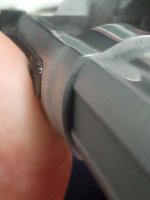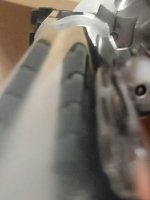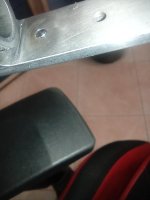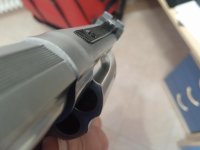I do not believe you could stretch a frame unless the loads were well over maximum. Most end shake is the result of wear on the ratchet button and the mating surfaces at the end of the yoke tube and the cylinder where it rides on the tube.
An accurate measurement from the top of the recoil shield to frame above the barrel would tell the truth. You would need solid numbers from other N frames of the same vintage to compare though. But, I don't doubt that there are variations in the size of the frame window from one N frame to another simply due to manufacturing variations. Wear on cutters, variations from one milling machine and or hold downs to the next etc,
If I were going to be home longer I would measure all my N frames to get a clue.
I would also believe that if a frame stretched it would become out of square, as the top strap would be what stretched the most. This would also tilt the barrel down slightly.
I have never heard of a gun where the top strap failed before the cylinder, which is what would happen if the top strap was repeatedly streched beyond its elastic limit. Yes, there have been a few where the barrel separated at the frame, but I believe that was due to metal flaws





